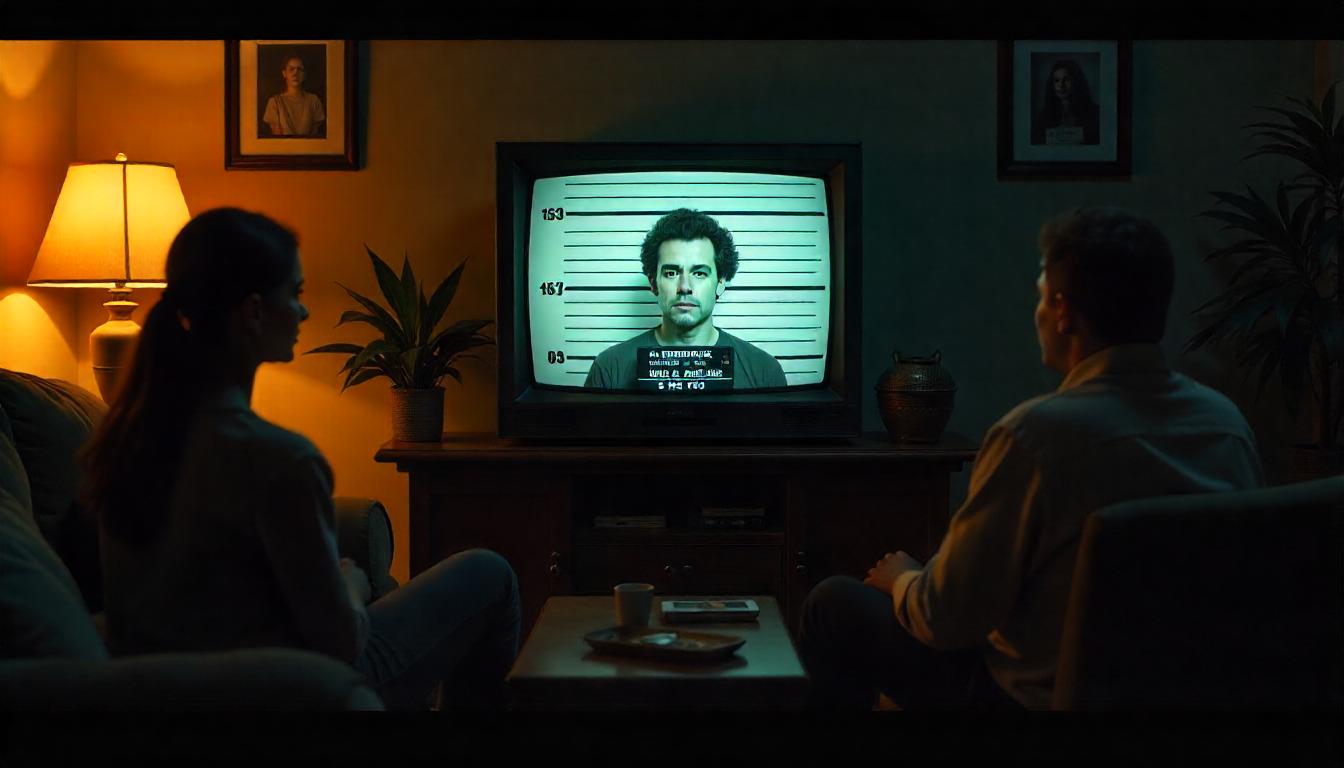When Meldadel’s mugshot hit social media, it didn’t take long before it was etched into the collective consciousness. The image—gaunt eyes, disheveled hair, and a hollow stare—was instantly shared, meme-ified, dissected, and debated. But this wasn’t just another tabloid curiosity or a viral post fodder. Meldadel’s mugshot became a flashpoint, igniting deeper conversations about how we, as a society, consume images of alleged wrongdoing—and what those images say about our values, our justice system, and the very psychology of public perception.
To understand the resonance of this image, we need to explore its backstory, the context of Meldadel’s arrest, and the broader framework of how mugshots operate in modern media. This is more than just about one person’s bad day—it’s about the entire machinery that turns a photo into a narrative, and that narrative into a weapon.
The Incident and the Image
Meldadel, a once-reclusive tech entrepreneur turned outspoken critic of surveillance capitalism, was arrested under murky allegations involving fraud, data manipulation, and obstruction of justice. The charges are still under investigation, and no verdict has been reached. Yet, the mugshot made its way into public circulation within hours of the arrest, framed by headline after headline that read like character assassinations. There was no “allegedly.” The image itself had already rendered judgment.
What made this mugshot different wasn’t just who was in it—it was how the public and media responded. Meldadel had cultivated a persona of control and intelligence, a kind of mythic figure in fringe digital circles. But the mugshot showed a human being stripped of power. That contradiction—between myth and mortality—created a cultural rupture.
Mugshots: From Documentation to Spectacle
Mugshots were never intended for public consumption. Historically, they were tools for internal police records, not public shame. But as journalism shifted into the digital era—and as the economic incentive to go viral grew—mugshots became clickable commodities. Sites that specialize in publishing booking photos operate on an economy of humiliation, often charging fees for removal. It’s legalized extortion under the pretense of transparency.
Meldadel’s image didn’t just appear on news websites. It was immediately weaponized on social media, transformed into commentary. Some used it to mock. Others to mourn. And a significant portion to reinforce preconceived biases. People weren’t responding to facts—they were responding to a photo. A snapshot, frozen in time, stripped of nuance.
The Legal Gray Zone
From a legal standpoint, the publication of mugshots is technically permissible in many jurisdictions. But should it be? Critics argue that releasing mugshots prior to conviction undermines the presumption of innocence. The legal system is built on the principle that one is innocent until proven guilty, but a mugshot implies guilt, especially when paired with sensational headlines.
Some states in the U.S. have already restricted public access to mugshots unless there’s a compelling public interest. Yet in the case of Meldadel, whose arrest could have implications for tech policy and government oversight, the argument for public interest was enough to justify the image’s release.
Still, the question remains: when does public interest become public consumption?
Social Media’s Court of Public Opinion
Perhaps the most alarming part of Meldadel’s mugshot saga is how swiftly public opinion was formed and weaponized. On platforms like X (formerly Twitter), TikTok, and Reddit, the photo was discussed more than the charges. Users speculated on drug use based on skin tone. Others created conspiracy theories linking Meldadel’s fall to shadowy government forces. Some even went as far as to create digital art inspired by the image—a surreal commodification of someone’s worst moment.
It reflects a chilling truth: mugshots no longer serve justice—they serve virality.
The Psychology of Perception
Why are we so drawn to mugshots like Meldadel’s? The answer may lie in how humans are wired. Psychologists suggest that faces communicate a wealth of nonverbal information, and we are conditioned to seek meaning in expressions. A neutral mugshot can appear cold or menacing simply because we expect emotion. When there is emotion—grief, anger, or confusion—we interpret it as a story.
In Meldadel’s case, people saw what they wanted to see: the fall of an icon, the exposure of a hypocrite, or the framing of a rebel. The photo became a Rorschach test.
But the real concern is how that perception can influence actual outcomes. Pretrial bias, jury selection, even judicial behavior can be shaped by how the public reacts. In other words, a mugshot can become a silent prosecutor.
Beyond the Image
There’s also a deeper cultural narrative at play. Meldadel was a symbol—of defiance, disruption, and digital rebellion. The mugshot, then, becomes more than a photo; it’s a cultural metaphor. It’s the system’s way of saying: “You can’t out-code the law.”
But it also raises another point. If someone as high-profile as Meldadel can be publicly dismantled by a single image, what hope do ordinary people have?
In marginalized communities, mugshots have long been tools of systemic oppression. Black and brown individuals are disproportionately represented in these image databases, often without charges leading to conviction. Meldadel’s case, in a strange way, shined a spotlight on a problem activists have decried for years.
Toward a More Ethical Media Landscape
The media’s responsibility in all this cannot be understated. News outlets face the challenge of balancing transparency with humanity. The publication of Meldadel’s mugshot—before a trial, before a defense, before any evidence was presented—shows a willingness to let an image do the talking.
Journalism must ask itself: Are we informing the public, or feeding the spectacle?
Some solutions already exist. Guidelines from the Society of Professional Journalists urge restraint in using images that could cause undue harm. Legal reforms are slowly gaining traction. But until cultural demand shifts, the mugshot economy will persist.
Final Thoughts: The Mirror We Hold Up
Meldadel’s mugshot wasn’t just a photo of a person in custody. It was a mirror held up to our society—a reflection of our addiction to scandal, our rush to judgment, and our tendency to flatten human complexity into clickbait narratives.
The true impact of that image may not lie in the courtrooms, but in the court of public reflection. Because until we learn to look beyond the photo, we’ll remain prisoners of perception.


